Yong Ming Zhang
age ~63
from Monrovia, CA
- Also known as:
-
- Yong M Zhang
- Yongming Zhang
- Ming Ming Zhang
- Ming Yong Zhang
- Min G Zhang
- Yong-Ming Zhang
- Zhang Yong-Ming
Yong Zhang Phones & Addresses
- Monrovia, CA
- Monterey Park, CA
- Alhambra, CA
Us Patents
-
Coiled Coil Immunoglobulin Fusion Proteins And Compositions Thereof
view source -
US Patent:20200270353, Aug 27, 2020
-
Filed:Mar 30, 2020
-
Appl. No.:16/835171
-
Inventors:- La Jolla CA, US
Yong ZHANG - Temple City CA, US
Yan LIU - San Diego CA, US
Peter G. SCHULTZ - La Jolla CA, US -
International Classification:C07K 16/28
C07K 14/81
C07K 14/64
C07K 14/605
C07K 14/47
C07K 16/32
C07K 14/61
C07K 14/435
C07K 14/575
C07K 14/535
C07K 14/505
A61K 47/68
A61K 47/65
C07K 14/705
C07K 16/10
A61K 39/395 -
Abstract:Disclosed herein are immunoglobulin fusion proteins comprising a first antibody region, a first therapeutic agent, and a first connecting peptide; wherein the first therapeutic agent is attached to the first antibody region by the connecting peptide; and wherein the connecting peptide does not comprise a region having beta strand secondary structure. The connecting peptide may comprise an extender peptide. The extender peptide may have an alpha helical secondary structure. The connecting peptide may comprise a linker peptide. The linker peptide may not comprise any secondary structure. Also disclosed herein are compositions comprising the immunoglobulin fusion proteins and methods for using the immunoglobulin fusion proteins for the treatment or prevention of a disease or condition in a subject.
-
Bovine Fusion Antibodies
view source -
US Patent:20150376264, Dec 31, 2015
-
Filed:Jan 10, 2014
-
Appl. No.:14/760115
-
Inventors:- La Jolla CA, US
Yong ZHANG - Temple City CA, US
Peter G. SCHULTZ - La Jolla CA, US -
International Classification:C07K 16/00
C07K 7/08
C07K 14/64
C07K 14/81
C07K 14/575
C07K 14/61 -
Abstract:Disclosed herein are immunoglobulin constructs comprising at least one immunoglobulin domain or fragment thereof; and a therapeutic polypeptide or derivative or variant thereof attached to or inserted into said immunoglobulin domain. Also provided are immunoglobulin constructs comprising a mammalian immunoglobulin heavy chain comprising at least a portion of a knob domain in the complementarity-determining region 3 (CDR3H) or fragment thereof; and a therapeutic polypeptide attached to or inserted into the CDR3H. Also provided are immunoglobulin constructs comprising a mammalian immunoglobulin heavy chain comprising at least a portion of a stalk domain in the complementarity-determining region 3 (CDR3H) or fragment thereof; and a therapeutic polypeptide attached to or inserted into said stalk domain of the CDR3H. Also described herein are methods and compositions comprising the immunoglobulin constructs described herein for treatment and prevention of a disease or condition in a subject.
Isbn (Books And Publications)


Changing Tax Law in East and Southeast Asia Towards the 21st Century
view sourceAuthor
Yong Zhang
ISBN #
9041104917

Comparative Studies on Governmental Liability in East and Southeast Asia
view sourceAuthor
Yong Zhang
ISBN #
9041110747
License Records
Yong Wei Zhang
License #:
2710053787
Category:
Tradesman
Name / Title
Company / Classification
Phones & Addresses
CEO
Yong Zhang
Brick, Stone, and Related Construction Materi...
Brick, Stone, and Related Construction Materi...
2901 S Sepulveda Blvd #217, Los Angeles, CA 90064
President
Zhl Meseta Group Inc
385 S Lemon Ave, Walnut, CA 91789
President
Yso Services, Inc
Nonclassifiable Establishments
Nonclassifiable Establishments
840 N Broadway, Los Angeles, CA 90012
4134 Bresee Ave, Duarte, CA 91706
4134 Bresee Ave, Duarte, CA 91706
President
Newsaga Fashion, Inc
1350 Bixby Dr, Whittier, CA 91745
President
HARMONY LAND, INC
Nonclassifiable Establishments
Nonclassifiable Establishments
14418 Hawthorne Blvd, Lawndale, CA 90260
2018 Pacific Coast Hwy, Lomita, CA 90717
2018 Pacific Coast Hwy, Lomita, CA 90717
President
Enc Medical Group, Inc
Group Medical Practice
Group Medical Practice
4675 Macarthur Ct, Newport Beach, CA 92660
(949)3870881
(949)3870881
Principal
Age Gilded Investment LLC
Investor
Investor
23341 Golden Spg Dr, Pomona, CA 91765
T.Z. Capital, LLC
2376 Centennial Way, Corona, CA 92882
Medicine Doctors

Yong Zhang
view sourceSpecialties:
Internal Medicine
Work:
Kaiser Permanente Medical GroupKaiser Walnut Creek Medical Group
1425 S Main St, Walnut Creek, CA 94596
(925)2954000 (phone)
1425 S Main St, Walnut Creek, CA 94596
(925)2954000 (phone)
Education:
Medical School
Kath Univ Leuven, Fac Der Geneeskunde, Leuven, Belgium
Graduated: 1987
Kath Univ Leuven, Fac Der Geneeskunde, Leuven, Belgium
Graduated: 1987
Procedures:
Destruction of Benign/Premalignant Skin Lesions
Vaccine Administration
Vaccine Administration
Conditions:
Abdominal Hernia
Acne
Acute Pharyngitis
Alopecia Areata
Anxiety Phobic Disorders
Acne
Acute Pharyngitis
Alopecia Areata
Anxiety Phobic Disorders
Languages:
English
Spanish
Vietnamese
Spanish
Vietnamese
Description:
Dr. Zhang graduated from the Kath Univ Leuven, Fac Der Geneeskunde, Leuven, Belgium in 1987. She works in Walnut Creek, CA and specializes in Internal Medicine. Dr. Zhang is affiliated with Kaiser Permanente Walnut Creek Medical Center.
Resumes

Research Associate At The Scripps Research Institute
view sourcePosition:
Research Associate at The Scripps Research Institute
Location:
San Diego, California
Industry:
Pharmaceuticals
Work:
The Scripps Research Institute - Greater San Diego Area since Jul 2011
Research Associate
University of Guelph Mar 2004 - May 2006
Graduate Student
Research Associate
University of Guelph Mar 2004 - May 2006
Graduate Student
Education:
Albert Einstein College of Medicine of Yeshiva University 2006 - 2011
Ph.D., Biochemistry University of Guelph 2004 - 2006
M.Sc., Biophysics Shandong University 1999 - 2003
B.Sc., Biological Sciences
Ph.D., Biochemistry University of Guelph 2004 - 2006
M.Sc., Biophysics Shandong University 1999 - 2003
B.Sc., Biological Sciences

Senior Director, Embedded Software Engineering At Fortinet
view sourcePosition:
Senior Director, Embedded Software Engineering at Fortinet
Location:
Sunnyvale, California
Industry:
Computer Networking
Work:
Fortinet - Sunnyvale, CA since Apr 2008
Senior Director, Embedded Software Engineering
LGC Wireless (acquired by ADC telecommunications) Apr 2007 - Apr 2008
Senior Software Engineer
Strix Systems Aug 2006 - Apr 2007
Senior Software Engineer
Novatel Wireless Nov 2005 - Aug 2006
Senior Software Engineer
Solectek May 2005 - Nov 2005
Senior Software Engineer
Senior Director, Embedded Software Engineering
LGC Wireless (acquired by ADC telecommunications) Apr 2007 - Apr 2008
Senior Software Engineer
Strix Systems Aug 2006 - Apr 2007
Senior Software Engineer
Novatel Wireless Nov 2005 - Aug 2006
Senior Software Engineer
Solectek May 2005 - Nov 2005
Senior Software Engineer
Education:
Drexel University 1998 - 2000
MS, Electrical and Electronics Engineering Institute of Electronics, Chinese Academy of Sciences 1995 - 1998
MS, Electrical and Electronics Engineering Tsinghua University 1990 - 1995
BS, Engineering Physics
MS, Electrical and Electronics Engineering Institute of Electronics, Chinese Academy of Sciences 1995 - 1998
MS, Electrical and Electronics Engineering Tsinghua University 1990 - 1995
BS, Engineering Physics
Skills:
Embedded Systems
Wireless
WiFi
TCP/IP
Linux
Device Drivers
Linux Kernel
C
Perl
IP
VoIP
C++
Wireless
WiFi
TCP/IP
Linux
Device Drivers
Linux Kernel
C
Perl
IP
VoIP
C++

Yong Zhang
view sourceLocation:
United States

Yong Min Zhang California
view sourceWork:
restaurant
ca
Mar 2011 to Sep 2012
sushi chef
ca
Mar 2011 to Sep 2012
sushi chef
Education:
shen yang college
shen yang
2007 to 2009
college cook in cook
shen yang
2007 to 2009
college cook in cook
Myspace

Yong Yi Zhang
view source
Yong Mei Zhang
view source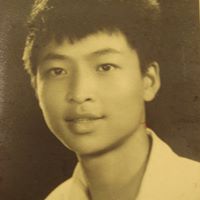
Yong Qiang Zhang
view source
Yong Chen Zhang
view source
Yong Jie Zhang
view source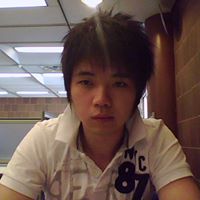
Yong Qing Zhang
view source
Yong Zhi Zhang
view source
Yong Zhang
view sourceYoutube
Plaxo

Zhang Yong
view sourcekangyongtechserviceco

Zhang Yong
view sourceJinjingjiu Spetial Metal Company

Yong Zhang
view sourcealibaba com
Googleplus
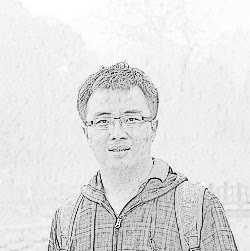
Yong Zhang
Work:
Adobe Systems (2010)
Education:
Ustc
Tagline:
Who knows me

Yong Zhang
Relationship:
Single
Bragging Rights:
会昌空虎、汗落乡土

Yong Zhang
Education:
University of Western Australia - Engineering, Curtin University of Technology - Engineering

Yong Zhang
Bragging Rights:
十堰职业技术学院
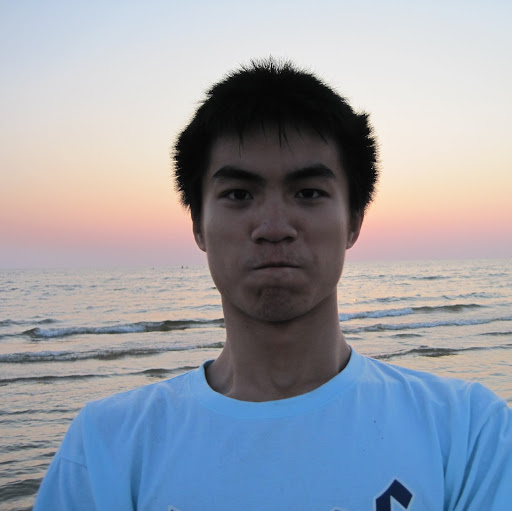
Yong Zhang
Education:
University of Western Ontario
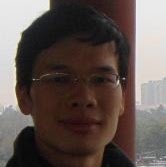
Yong Zhang
About:
外圆内刚
Bragging Rights:
书海20年
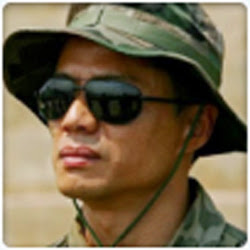
Yong Zhang

Yong Zhang
Flickr
News

Cosmic Buckyballs Could Be The Source of Mysterious Infrared Light
view source- What that research didn't cover was the changes that level of ionization would wreak on the light emitted by the buckyballs. Sadjadi, Parker and their colleagues Chih-Hao Hsia and Yong Zhang, both also affiliated with the Laboratory for Space Research, set out to investigate.
- Date: Aug 02, 2022
- Category: Science
- Source: Google

CRISPR Variant Produces Tuberculosis Resistant Cows
view source- "We used a novel version of the CRISPR system called CRISPR/Cas9n to successfully insert a tuberculosis resistance gene, called NRAMP1, into the cow genome., explained senior study investigator Yong Zhang, Ph.D., principal investigator at Northwest A&F University. We were then able to successf
- Date: Feb 01, 2017
- Category: Health
- Source: Google

Better batteries through biology?
view source- In addition to Oh, Belcher, and Shao-Horn, the work was carried out by MIT research scientists Jifa Qi and Yong Zhang and postdoc Yi-Chun Lu. The work was supported by the U.S. Army Research Office and the National Science Foundation.
- Date: Nov 13, 2013
- Category: Sci/Tech
- Source: Google

Research Shows Stars Create Organic Matter of Unexpected Complexity
view source- Sun Kwok and Dr. Yong Zhang of The University of Hong Kong have made the groundbreaking discovery that much of the previously unexplained organic matter that floats between the stars is startlingly more complex than previously thought. Some of the structures are actually so complex that they resemb
- Date: Oct 27, 2011
- Category: Sci/Tech
- Source: Google

Cosmic dust contains organic matter from stars, study finds
view source- Scanning the cosmos in infraredKwok and his colleague Yong Zhang, also of the University of Hong Kong, studied a set of well-known but mysterious infrared emissions found in stars, interstellar space and galaxies. These phenomena, which are collectively called Unidentified Infrared Emission (U
- Date: Oct 27, 2011
- Source: Google

Stars manufacturing complex organic matter?
view source- compounds of unexpected complexity - some resembling coal and petroleum - exist throughout the universe and are being made by stars. The proponents of this controversial idea, Professors Sun Kwok and Yong Zhang of the University of Hong Kong, argue their case in the current issue of the journal Nature.
- Date: Oct 27, 2011
- Category: Sci/Tech
- Source: Google

Discovery: Cosmic Dust Contains Organic Matter from Stars
view source- Kwok and his colleague Yong Zhang, also of the University of Hong Kong, studied a set of well-known but mysterious infrared emissions found in stars, interstellar space and galaxies. These phenomena, which are collectively called Unidentified Infrared Emission (UIE) features, have been known
- Date: Oct 26, 2011
- Source: Google
Get Report for Yong Ming Zhang from Monrovia, CA, age ~63














